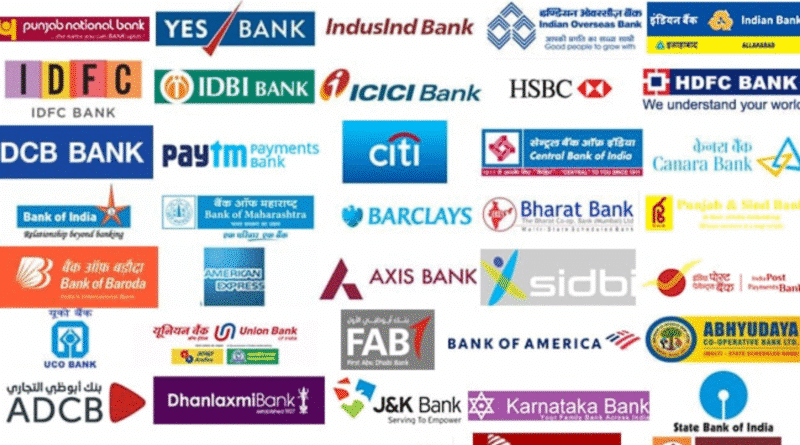Foreign Capital Floods Indian Banking: Global Investors Pour $15 Billion Into India’s Financial Sector
India’s banking and financial services sector is witnessing a historic wave of foreign capital inflows.
In 2025 alone, global investors have poured nearly $15 billion into Indian banks, NBFCs, and fintech-linked financial institutions — the highest in over a decade.
The surge is led by major cross-border acquisitions and strategic stake purchases by global giants, drawn by India’s rapid economic growth, its world-class digital infrastructure (like UPI), and a vast underbanked population offering massive long-term potential.
Foreign Investment Hits Record Levels
- India’s financial services sector recorded $8 billion in M&A deals between January and September 2025 — a 127% year-on-year increase.
- Including private placements and minority stake investments, total foreign capital inflows are nearing $15 billion for the year.
- This wave of investment marks the largest-ever foreign participation in India’s banking sector within a single calendar year.
Major Global Deals Transforming Indian Banking
Here’s a snapshot of some landmark transactions that define this investment boom:
| Investor / Buyer | Target Bank / Firm | Deal Size (USD) | Stake / Structure | Significance |
|---|---|---|---|---|
| Sumitomo Mitsui Banking Corporation (Japan) | Yes Bank | $1.6 B | ~20% equity stake | Marks a major Japanese entry into Indian private banking. |
| Warburg Pincus & Abu Dhabi Investment Authority (ADIA) | IDFC FIRST Bank | $877 M | Convertible preference shares (~15%) | Signals strong PE and sovereign fund confidence. |
| Emirates NBD (Dubai) | RBL Bank | $3 B | 60% controlling stake | A defining cross-border acquisition in Indian banking history. |
| Other Institutional Investors (PEs, Sovereign Funds) | Multiple NBFCs & Fintechs | ~$9.5 B | Equity, M&A, JV | Spread across digital lending, housing finance, and payments. |
Why India is Attracting Massive Global Banking Capital
1. Strong Economic Growth
India continues to be the fastest-growing major economy — projected to expand at 6.8% in FY2025–26 (IMF estimate).
The financial sector benefits directly from rising consumption, expanding credit demand, and stronger corporate balance sheets.
2. Expanding Digital Infrastructure
India’s Unified Payments Interface (UPI) has revolutionized payments.
- Over 12 billion UPI transactions per month in 2025, accounting for 46% of global real-time digital transactions.
- Such infrastructure lowers transaction costs, expands reach, and makes banking highly scalable — a key attraction for global investors.
3. Large, Underbanked Market
Despite growth, more than 190 million Indian adults remain unbanked.
This vast gap creates space for expansion in credit, microfinance, and digital banking.
Foreign investors see this as a multi-decade opportunity rather than a short-term play.
4. Liberalizing FDI Regulations
India has progressively eased foreign direct investment (FDI) limits in banking and financial services:
- Up to 74% FDI allowed in private sector banks.
- Government is reportedly considering raising the foreign cap in public sector banks to 49%.
5. Robust Domestic Market and Low External Risk
Indian banks are comparatively insulated from global credit shocks.
Their exposure to foreign markets is low, and local deposit growth continues to outpace loan growth — a positive sign for stability.
The Digital Advantage: UPI, Fintech, and Financial Inclusion
India’s digital revolution has fundamentally reshaped its banking landscape:
- Over 1.5 million micro-ATMs and 90,000+ offsite ATMs/CRMs nationwide.
- Government initiatives like Jan Dhan Yojana, Aadhaar, and UPI have connected millions to formal financial systems.
- Fintech collaborations with banks are driving new-age lending, insurance, and payment solutions.
Global investors — from sovereign funds to private equity — are leveraging these digital rails to access scalable, data-rich banking opportunities.
Key Statistics (2025)
- $81.04 Billion total FDI inflows into India (FY 2024–25).
- $9.35 Billion of that in the services sector, led by financial services.
- $8 Billion in financial-sector M&A (Jan–Sept 2025), +127% YoY growth.
- $15 Billion (est.) total cross-border deal value (M&A + PE + equity).
- 46% of global real-time payment transactions powered by UPI.
Challenges Ahead
While foreign capital inflows boost liquidity and innovation, challenges persist:
- Regulatory complexity – especially for controlling stakes and mergers.
- Currency volatility – rupee movements impact returns.
- Credit quality – NBFC and SME sectors remain watch points.
- Governance alignment – integrating foreign management practices with Indian banking norms.
Future Outlook: A Multi-Trillion Opportunity
The next five years could redefine India’s financial landscape:
- Foreign banks, sovereign funds, and PE players are expected to invest over $50 billion cumulatively by 2030.
- Partnerships with domestic banks will deepen, focusing on digital lending, wealth management, and SME finance.
- As FDI rules liberalize, expect larger controlling acquisitions and cross-border bank mergers.
India is fast becoming the epicenter of global banking transformation — combining digital depth, economic scale, and investor-friendly policy.
Expert Insight
“India’s banking sector today is where China’s was in 2005 — massive growth potential, digital adoption at scale, and global capital chasing future market share.”
— Financial Economist, Asia-Pacific Forum (October 2025)
Conclusion
Foreign capital flooding into Indian banking is not a temporary wave — it’s a structural shift.
With strong macro fundamentals, digital transformation, and regulatory support, India is positioning itself as the next global banking hub.
As foreign investors deepen their presence, Indian banks stand to gain access to world-class technology, governance, and innovation — setting the stage for sustainable, inclusive financial growth.



